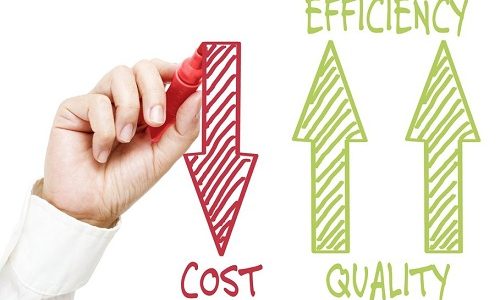Lower cost or higher quality?
As negotiators, we often think about whether we want lower cost or higher quality. Well it is intriguing to realize that in the big picture, economic progress has come from having both at the same time.
Jason Crawford writes in “The Roots of Progress” about the history of economic progress. Consider his account about the Industrial Revolution (Did the Industrial Revolution decrease costs or increase quality?). The usual account is that the Industrial Revolution slashed costs by mechanizing production. That’s true, but there was another side to what happened: mechanization dramatically improved quality. As Crawford explains, “making things by hand requires skill and attention: just try making your own clothing or furniture at home; on your first attempt you won’t be able to achieve nearly the quality you can purchase for a modest price. Automation not only improves average quality, but also consistency, by reducing variance.”
Consider cotton thread, one of the first products whose manufacturing was automated. In the late 1700s, spinning machines were introduced which could do the work of hundreds of hand spinners. The price of all thread dropped, but the most dramatic fall was in the price for the highest-quality thread, 100 twist. It’s possible for humans to spin thread this fine, but it’s much more difficult and takes longer. Machines have a much easier time spinning any quality of thread, so the price of 100 twist thread became only slightly more than the price of lower quality thread. Customers could get both lower prices and higher quality.
This is what happened across the economy. For instance, machine tools made possible making interchangeable parts. “These tools did not rely on the worker holding either the part to be worked or the cutting edge by hand: both were clamped down and controlled by screws, gears and dials. As with thread, this increased both quality and consistency…. Before, final assembly required filing parts to fit if they didn’t line up just right. Interchangeable parts eliminated the need for this, speeding up the production line. Ultimately, this resulted in lower prices for finished goods.”
Today, we assume that electronic products – from mobile phones to laptop computers and the like – will improve in quality and simultaneously come down in price. We should understand that from a longer term perspective, that same process has been happening in almost every part of the economy, albeit at a slower pace. We negotiators should never be satisfied with the same product that we bought a decade ago: we should want something which is both better and cheaper. Indeed, it is our job to prod our suppliers to speed up the improvement process. We should never accept blindly the excuse that higher quality is going to cost more – the lesson of history is that much as that may be true today, tomorrow’s story will be better quality at lower cost.

